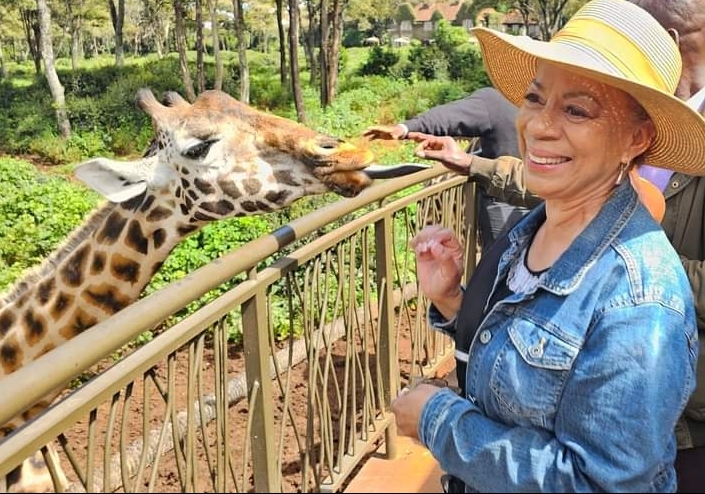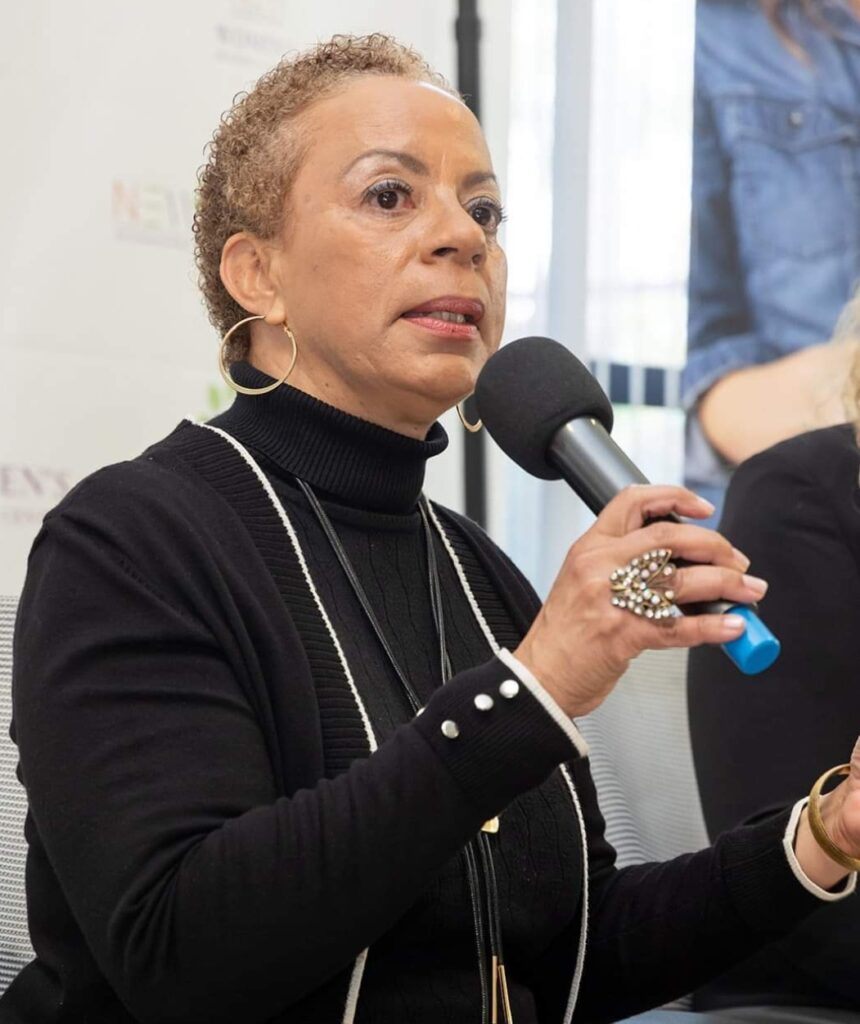In today’s society, with the influence of advanced technology, contributing to social deprivation, combined with a global trend towards urban living with its social stresses, it’s no wonder that millions of people in the U.S. are affected by mental illness each year. Poor mental health has been known to not only affect a person’s ability to live a fulfilling life but it can also lead to serious physical and societal problems. What can help stem this public health issue? It is becoming increasingly clear that time in nature not only offers aesthetic beauty but can play an essential role in contributing to our emotional, mental, and physical well-being. Research has proven that exposure to nature can decrease stress, anxiety, and even depression and can enhance the level of happiness in our lives.
Denise Nura Loy Buchanan is a well-known Landscape Designer and Psychoneurologist who has dedicated her career to promoting the healing power of nature. Her work integrates landscape design with psychological principles to create spaces that help people feel a greater connection to the earth while enriching the environment. Her deep appreciation for the power of nature traces back to her childhood in Kingston, Jamaica. Spending time gardening and exploring the outdoors during her youth, she discovered the nurturing environment of nature which helped her heal from her childhood trauma. The plants and flowers were her kind companions and offered her a reprieve from self-blame and despair. She also gained immense satisfaction from the wonder of the multiplication of planting a single seed that can provide nutritious food, enough to share with the neighbors. These formative experiences greatly influenced her career and motivated her to incorporate nature into her professional endeavors.
Nature-Based Solutions for Community Well-Being
Denise’s work integrates sustainability principles into her designs to ensure that her projects are environmentally friendly. Because of climate change, many natural hazards are expected to become more frequent and more severe. Reducing the impacts these hazards have on lives, properties, and the economy is a top priority for many communities. Designing community gardens, drought-tolerant landscapes, urban forests, public parks, and other green spaces which weave natural features into the community, bring people together, providing opportunities for social interaction and adaptation. For example, community gardens offer more than just a space for cultivating plants. They serve as a platform for people to collaborate, share resources, and provide mutual support. These gardens can evolve into centers of community engagement, strengthening social bonds and environmental resiliency and fostering a greater sense of community.
Designing Healing Spaces
Creating natural environments for emotional and physical restoration is the focus of Denise‘s work. These healing spaces can also be created indoors if there is no outdoor garden space. There are five essential components that when integrated, provide maximum effect in designing healing spaces:
1. Natural Light. Especially for indoor gardens, green walls, and potted plants exposed to natural light are effective ways to bring nature indoors.
2. Plants. Besides including a variety of trees and shrubs in the garden which help improve air quality and create a calming environment, using materials like wood, stone, and bamboo can create a warm and inviting atmosphere. These materials often have tactile and aesthetic qualities that contribute to a sense of comfort and connection to nature.
3. Water Elements. The sound and sight of water can be incredibly soothing and can help reduce anxiety and stress. Fountains, ponds, and indoor waterfalls are popular choices for incorporating water elements.
4. Color, Texture & Fragrance. Using a soft color palette and a mixture of plants with various fragrances and textures creates a serene environment and also adds to the sensory experience.
5. Views. Providing views of natural landscapes, such as gardens, trees, or water features, can have a restorative effect on the mind and body. Strategic placement of windows and outdoor seating areas can enhance these views.

A Cultural Mind-Set Shift
To effectively design healing spaces that leverage the powerful properties of nature, Denise believes a significant cultural mindset shift is necessary. Key aspects of this shift are that there needs to be a recognition that health encompasses not only physical ease but emotional, and psychological well-being. Society needs to move beyond a purely medical model to one that integrates environmental and social factors. Embracing the idea that natural elements are not just aesthetic additions but essential components of healing, involves prioritising design principles, which integrate natural light, greenery, water features, and natural materials into built environments.
In her work Denise encourages collaboration between architects, healthcare professionals, environmental psychologists, and community members in order to create spaces that truly meet the needs of their users. This approach ensures that diverse perspectives are considered in the design process. Designing spaces that reflect and respect the cultural and community context in which they are situated includes using local materials, incorporating culturally significant plants, and creating spaces that foster community connections.
As an Environmental Advocate, Denise prioritises sustainable practices in the design and maintenance of healing spaces which not only benefits the environment but also enhances the well-being of the people using these spaces. She raises awareness about the benefits of nature in healing and advocating for policies that support the integration of natural elements in public and private spaces includes educating stakeholders about the long-term benefits of investing in nature-based design. Denise is convinced that by adopting these shifts, we can create environments that not only promote healing but also foster a deeper connection between people and nature, ultimately leading to healthier and more resilient communities.
Conclusion
Nature serves as a powerful catalyst for mental and emotional healing and community building. When we are disconnected from nature and its healing benefits, our well-being suffers. Denise Nura Loy Buchanan’s work underscores the myriad benefits of weaving nature into our daily routines and public spaces. Her insights reveal how green environments can cultivate psychological well-being, foster connections, and strengthen communities. Her approach is an example of how we can design spaces that enhance community bonds and promote a healthier planet. Integrating nature into our lives not only boosts our own happiness but also nurtures a supportive society, making it essential for a more balanced and interconnected world.
Her famous quote is that “There is an inextricable link between how we treat each other and how we treat the natural environment. My role is to cultivate a world which works to benefit both.”










